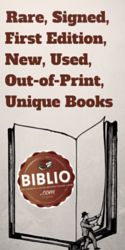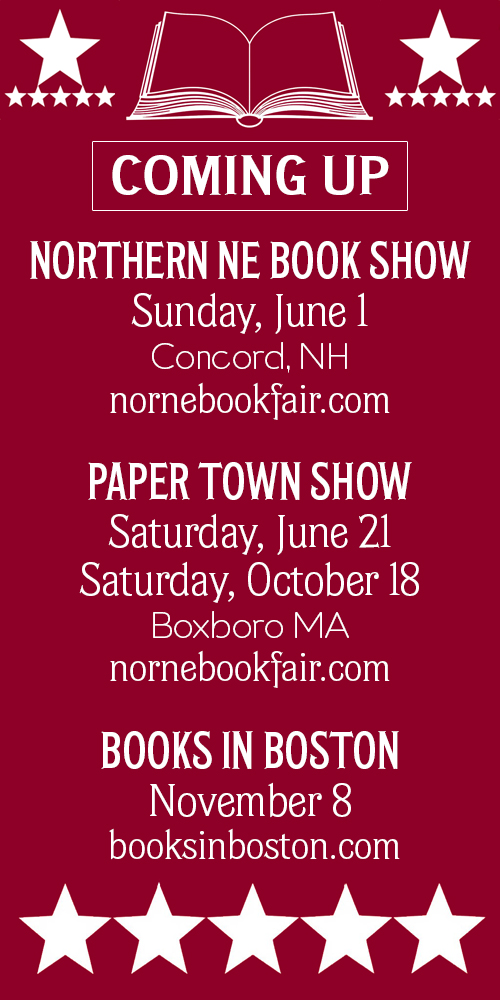My Way or No Way
“Friends don’t let friends plant annuals” is one of the more original bumper-stickers around here, yet while it gives us no useful information about good gardening design, it does tell us something about human psychology. At any rate, I think bedding plant enthusiasts would heartily disagree—in one of Robin Lane Fox’s gardening columns that appeared in the weekend edition of the FT last month he commented that a wealthy landowner has 42,000 annuals planted every spring in the gardens of his country house. The number has something to do with his wanting to outdo the original owner, who traditionally planted 40,000. I would love to see the size of his gardening staff—at our place we have only two, Raquel and me, and a young man who helps out with the mowing and some of the trimming.
The older I get the more I tend to be put off by people who pontificate or claim to have the last word on subjects such as gardening, food, religion, taste in books, decorating, clothes, or other areas where there are no absolutes. (by the time I’m finished with my clothes, any discerning street person would probably say “thanks but no thanks”). The garden-design cultists can be especially annoying—whether it has to do with planting schemes based on the color wheel (apparently someone forgot to tell nature or Van Gogh about it) or banishing the “unnatural” practice of massed planting of annuals, these members of the gardening Taliban can sometimes make other religious fundamentalists look like a bunch of Unitarians.
Robin Lane Fox has completed 40 years of writing his gardening column for the FT and has just published a new book (Thoughtful Gardening, Particular Books, 2010) that I’m looking forward to reading. I would guess, judging by past columns, that his advice would be to ignore many of the established rules, such as the color wheel that “was based on pseudo-science... (that) does not define forever which colours go together...” and to experiment within the limitations imposed by your location, soil conditions, and imagination. To my mind, a lot of the appeal of what he says results from his not being afraid to turn accepted rules upside down, often with spectacular results. For example, ignoring one of the current fashions of not including boldly-colored flowers normally grown for indoor display in an outdoor setting, the above-the-fold photograph of Mr. Fox in the middle of a planting of his dahlias comes at the beginning of the feature article in the FT’s House & Home section in the September 4th week-end edition. When he’s not working in the garden or writing his column for the FT, Mr. Fox is a fellow and tutor in classics at New College, Oxford and author of Alexander the Great (Penguin) and Pagans and Christians (Viking).
In our own gardens, perennials happily co-exist with annuals to the advantage of both, and from year to year we try out new ideas and designs gleaned from our winter’s reading and invent some new ones of our own. And should a landscape design fashionista ever visit, which is highly unlikely, and hint that “it’s not usually done that way” my initial impulse would probably be to thank him for the compliment.
*
The frustrations of being a reader are many. With thousands of books under our roof and so little time, I tend to read a lot of history and other books of general interest sloppily classified as non-fiction. That’s not to say I don’t read fiction. I have done and still do. All of Dickens, with the exception of some of the essays and letters; Austen (not always appreciated as a humorous writer whose Mrs. Bennet reappears in altered form as Mrs. Nickleby, eventually influencing Mark Twain), and a lot of others as time and indolence permit. I’ll admit that disconnecting cable television more than ten years ago has been a decided advantage.
At any rate I generally let people interpret my silence when meeting someone who, with arched eyebrows, announces “I never read novels, I only have time for serious books”. If you deliberately missed out on some of the world’s best writing, would you admit it in public?
As a long-time reader of history, especially that of the Middle East, I wade through a lot of books and for every T.E. Lawrence (GBS?) there’s a Noam Chomsky, whose rather turgid prose-style is disappointing for an esteemed scholar trained as a linguistics expert. Among the books I’m reading at the moment, Geoffrey Wawro’s Quicksand: America’s Pursuit of Power in the Middle East (Penguin, 2010), may well be one of the most comprehensive and credible modern histories of U.S. involvement in the region published in years. I’d recommend it highly and copies are readily available from a number of booksellers through Biblio.com, linked to this magazine’s website. What is surprising is that Quicksand was generally ignored by the reviewers and was pulled rather prematurely from the shelves of the big-box bookstores in our area.
I shouldn’t be put off fiction because the books of Clive Cusler (once I accidentally read a small part of one) remind me of the F.W. Dixon school of writing, any more than I would give up reading history because of the glut of books being flogged as such. The eclectic approach to most things suits me just fine.
Richard Russo is one of the best storytellers around. His books, mostly novels, include The Risk Pool, Nobody’s Fool, Straight Man, Empire Falls, Bridge of Sighs and the one I read a few weeks ago—That Old Cape Magic (Knopf, 2009). Many of Russo’s novels are influenced by his early life growing up in a once-prosperous, but now rapidly-declining mill town (where I also grew up) in Fulton County (NY), just as the late Louis Auchincloss, from an entirely different planet, wrote about what he knew best—New England private schools and the lives of bankers, lawyers, stockbrokers, and others of their ilk.
The characters in Russo’s latest are drawn from academia, a world he has become more familiar with of late. The frequent flashbacks of the main character, Griffin, who is traveling around Cape Cod with his father’s ashes in the trunk of his car, relate to his parents’ dealing with the frustrations of teaching and doing research in exile at a second-rate Mid Western university, all the while anticipating returning to New England and their academic roots each summer. In a sly dig at the pretentious, he explains his parents’ rather catholic reading habits...
While he roamed the beach...his parents spent sunny afternoons lying on the sand with...books they’d have been embarrassed to admit to their colleagues they’d ever heard of. They were on vacation...(also) from the literary canon they’d sworn to uphold. His mother’s taste ran to dark, disturbing thrillers and cynical spy novels...(and) his father alternated between literary pornography and P.G. Wodehouse, enjoying both thoroughly, as if “Naked Lunch” and “Bertie Wooster Sees It Through” were intended as companion pieces.
I suspect that both Richard Russo and Charles Gould are trying to tell me something. There are about a dozen unread P.G. Wodehouse paperbacks staring at me right now from a shelf across the room just begging to be added to the stack next to my prime-time reading chair, so I think I’d better get started.
*
My mother had strong opinions about food—one of them was “the only real clam chowder is New England clam chowder” or in Old Testament lingo “thou shalt have no other soups before me”—and if you don’t agree, “no soup for you”.
I grew up completely innocent of Manhattan clam chowder because no self-respecting person of refined taste could possibly like it, or that’s what I was told. Raquel was born in Cuba, where clam chowder of any kind was rarely on the menu, so during our first years together the New England variety was all we had. Since we both liked it, end of story, or so we thought. But one day when clam chowder was on special at the local market, we stocked up and somehow a few cans of Manhattan found their way home. We tried it, decided we liked both kinds, and have been unfaithful to New England ever since.
When my mother found out our little secret she was aghast. How could anyone possibly like New England and Manhattan clam chowder? I don’t know. I guess it helps if you like clams, for instance, as well as everything else that goes into making it. Nowadays we usually make our own and it’s never exactly the same which makes it all the more interesting.
And do you suppose the head chefs in many of our more expensive restaurants received their culinary training at Friendly’s or the Dairy Queen? I mean it’s really hard these days to get an entree that looks like anything other than a hot fudge sundae or a banana split. I like vegetables a lot, but it is a bit of a turn-off to see them all piled on top of each other with a lamb chop or salmon fillet holding up the pyramid and a sprig of rosemary instead of a cherry on top. When I think of it in time I’ll ask the waiter to arrange the parts of the entree separately so at least I can recognize what I’m eating—but if I forget, I do try to make the best of it and not act like a food nazi. However, if you like your entrees presented like a hot fudge sundae, go for it—no one will stone you, issue a fatwa or have you burned at the stake. In the meantime, if we want stew we’ll go to a place that serves it or make it ourselves.
*
Gardening faddists, self-absorbed literary critics, or food nazis might be annoying, but tract-waving, religious zealots claiming unique knowledge of or a special relationship to the Almighty are a stretch too far. Throughout the centuries many of them, by their actions in the name of religion or ethno-religious expansionism (in some cases subsidized by the American taxpayer) tirelessly demonstrate that they are at the root of much of the evil in the world. And that is a Devil for which I have no Sympathy.
After liberating ourselves from an unpleasant church situation (when I attended, which was seldom, it was usually with a book in tow), we began visiting a couple of the more ecumenically-minded churches in our village, the Quaker meeting house near Gordon Square in Bloomsbury, the Unitarians if the opportunity arises, or the home of the Great Spirit when in the garden. Nowadays we’re not only committed to not being committed to any one body of religious opinion, but tend to avoid organized groups (including born-again atheists) claiming sole possession of the last word on such matters.


























